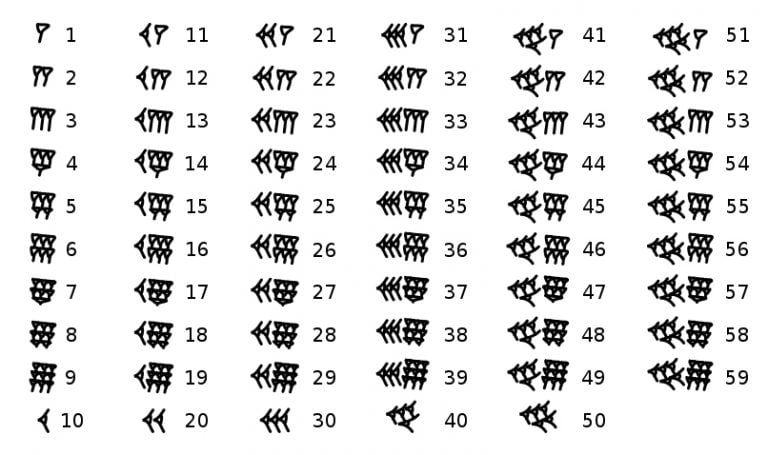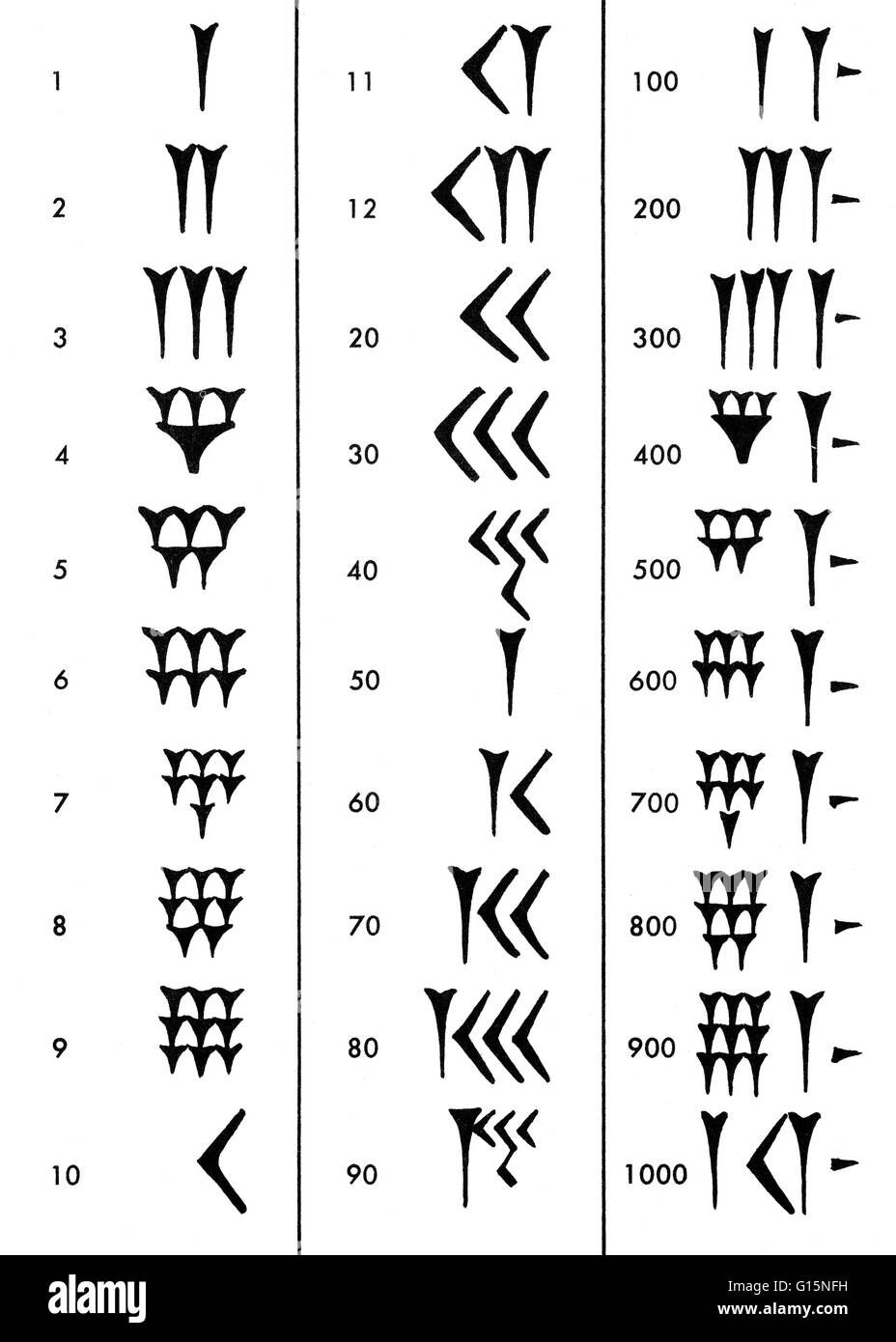
This is what the ancient Egyptian numeral system looked like:Īncient Egyptians also had a symbol for zero, but as their system is not positional, it was mainly used to indicate the base level of the structures they were building (like pyramids!). They didn't have the concept of positional notation. A rod meant 1, a cattle hobble was 10, a coiled rope was 100, a lotus flower was 1000. The ancient Egyptian counting system (appeared around 3000 BC) used objects from everyday life to symbolize numbers and used base-10.
#Another name for babylonian numerals full#
Did you ever wonder why there are 60 seconds in a minute, 60 minutes in an hour, and 24 hours in a day? Or why there are 360 degrees in a full circle? These are all echoes of this base-60 numeral system that ancient Babylonians used. 7532 in base-10 is equal to 2 5 32 in base-60.Īncient Babylonians affected the world in many ways. The same number in the Babylonian system would be 2 5 32 (2 * 3600 + 5 * 60 + 32 * 1). So when we ask for 7532 carrots in base-10, it actually means 7 * 1000 + 5 * 100 + 3 * 10 + 2 * 1 carrots. This means that with each digit to the left, the number's place value is increased 10 fold. The ancient Babylonian counting system (appeared around 2000 BC) was base-60.

This is what the ancient Babylonian numeral system looked like: The Babylonian numeral system is the first known positional numeral system, which means a value of a digit depends on the position of the digit. Various number systems were invented throughout human history, but 4 main ones were used by the biggest ancient human civilizations: the Babylonian numerals, the Egyptian numerals, the Roman numerals, and the Mayan numerals. If you are interested in how the numerical sense develops in human children I suggest you read this article. Human children under 18 months are sensitive to small changes in small quantities (values up to 3 or 4). Humans share this innate sense of numbers with other animals. Another subspecies (the solitary wasp in the genus Eumenes provides five caterpillars if the hatchling is going to be a male, and ten caterpillars for a female (unequal for a good reason: males tend to be smaller than females). Some subspecies of wasps provide 5 for each, another one provides 12, and another one does 24, but they always provide the same number of caterpillars for each egg. For example in the insect world, mother wasp lays her eggs in individual cells and provides every cell with a certain amount of caterpillars for her hatchlings. Some experiments and observations show that animals also seem to have a good number sense. So at some point, humans decided to use symbols to indicate certain numbers, and these symbols are called the numerals. I guess at some point somebody thought writing numbers with tally marks took very, very long when the numbers get bigger, and it was cumbersome for the person who was reading it as well.

The written language came later than the spoken language, when humans began to build more permanent social groups and start to grow their own food.

Around 30,000 years ago, even without a written language, our ancestors were counting stuff by bending their fingers, or pointing out to stones, or making marks with sharp stuff on bones which we now call the tally marks (also called hash marks.) Clusters of five strokes made it more legible, and different groups of people all around the world invented the tally system in slightly different ways, but always with the same logic- clustering 5 strokes in an order. \babydispĮdit: Version 0.4 of the package allows to typeset numbers beyond 59 (up to 60^9 = 1.0077696 × 10^16 in theory, although I think TeX will give up before that).Counting stuff is as ancient as we are. I'm also adjust kerning between tens and units. Also, 20 seems to be missing while 30 is mapped several times for some reason, so I'm doing 20 with 2 "10" glyphs and a bit of kerning. Note: It turns out that the font doc is wrong (Ah! If they used TeX to generate it.) and 9 is actually mapped at 1240E, quite logically. Using fontspec with XeTeX or LuaTex and things like \char"1240D, you could easily typeset what you need.

There is a paleo-babylonian font on this page.


 0 kommentar(er)
0 kommentar(er)
